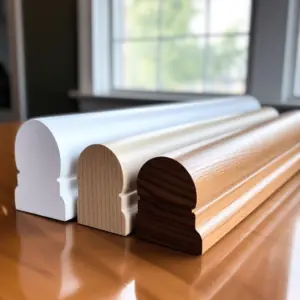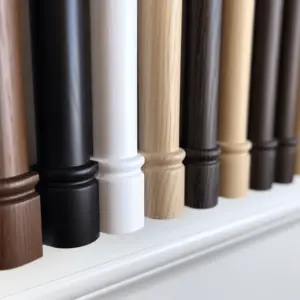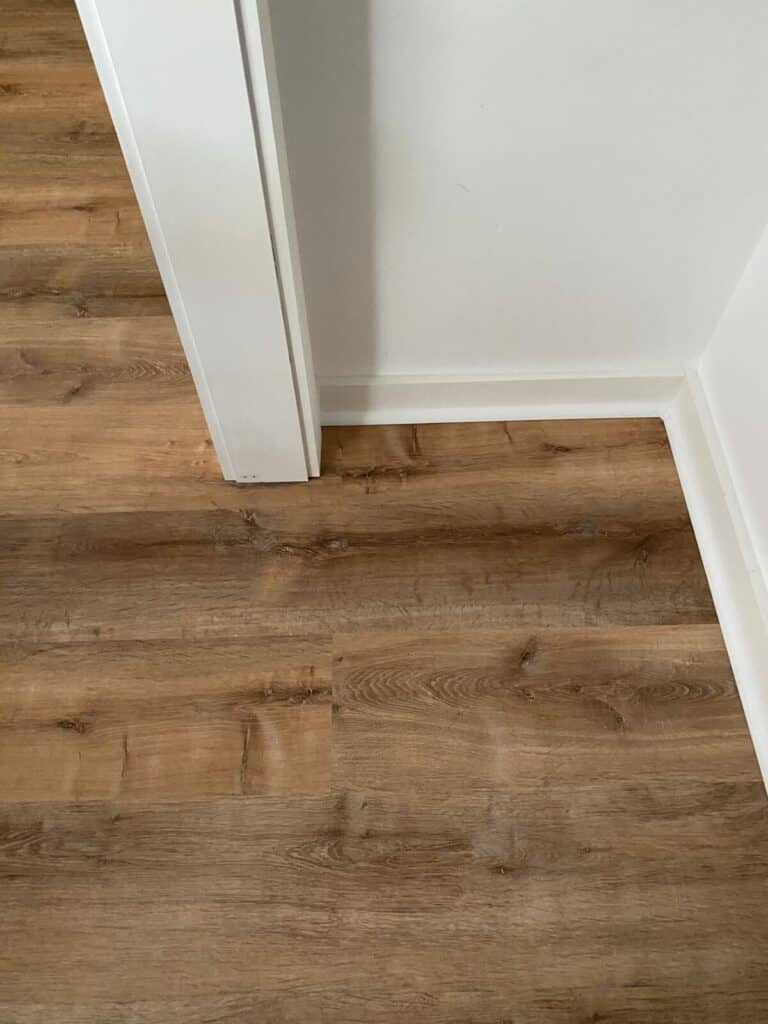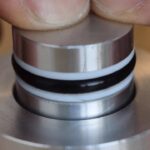PVC and Wood Quarter Round, Quarter round is a type of trim that is usually a long, slender cut of building materials such as wood or plastic used to line the edges of various corners of a room. It can also be found on doors and windows as a decorative measure and as a functional aspect of a building.
This particular trim just like the name suggests has a cross-sectional shape of a quarter circle hence the name quarter round. The edges which intersect at right angles, more often than not measure a length of three-quarters of an inch.
Since quarter round, in particular, is rarely elaborately engraved, you will often find it against the floor where it is used as a baseboard to seal the crevice between the wall and the floor and also to create a smoother professional look to the overall design of the room.
Quarter round can be made of different materials today but previously it was only available in wood. Even with wood, you can have engineered wood, softwood, and hardwood. Quarter round is also available in plastic or what many call simply vinyl. Vinyl is short for Polyvinyl Chloride or PVC.
Whether to go for PVC quarter round or wood quarter round depends on a number of factors. Each has its merits and demerits which are expounded below.
Table of Contents
PVC Quarter Round Vs Wood Quarter Round

Aesthetic
Wood is always going to be aesthetically superior for discerning customers due to its natural features. Particularly beautiful grain on wood cannot be easily outmatched by plastic of any kind and plastic tends to have a distinctly synthetic appearance which can only mimic but not entirely replace the wooden look entirely.
PVC quarter round comes in many patterns and can be appealing to many. In the long term, PVC quarter round cannot beat wood in terms of aesthetics but it does offer an acceptable substitute if your tastes and preferences allow it.
Function
Quarter rounds are used to create clean seams and eliminate crevices. Both will work well if professionally installed. Most function issues are caused by bad installation, not materials.
As a consumer, you should consult a skilled contractor before making a decision because your demands may be better with wood or PVC. Thus, a skilled designer and builder should determine function.
Installation
Most builders say wood is easier to install than PVC, especially for large installations with odd shapes and curves. Wood is flexible enough to follow wall curvatures, making installation easier and better.
PVC is lighter than wood but rigid and brittle, so much of it might be wasted during installation. PVC never bends and is almost rigid.
The uncomfortable corners at minor angles make the end product unattractive after being fitted on a curve.
Wood waste is low if measurements are obtained and provided for, and the final job is practical and attractive.
Durability
The durability of PVC or wood baseboard depends on how much water, physical force, and jostling it receives. Wood doesn’t need touch-ups for decades if it’s stained and lacquered. The major issue with wood quarter round is water damage, which leads to pest infestation, warping, rot, and cracking. A wooden baseboard will not last if it is exposed to heavy precipitation. Sealant protects wood but isn’t durable.
Water won’t damage PVC quarter round baseboards, but furniture and kids will crack them if they kick and jostle them. The space should not be high-traffic or the surfaces against the walls should not be hit too hard if you plan to utilize plastic baseboard.
PVC cannot handle much of this, and ignoring this will increase repair costs. Without such stress, PVC will last years or decades in good condition. PVC will not be attacked by pests and other organic infestations apart from rodents so if you have recurring termite problems you should consider PVC over wood.
Environmental Concerns

PVC wastes the environment, therefore using more plastics, no matter how versatile, is terrible for everyone.
The recyclability of plastic may help, but it is practically impossible to recycle at the same rate as plastic goods are manufactured, used, and disposed.
Wood is renewable, so as demand rises, so does production, reviving forests. Increasing forest and tree cover provides wood and benefits the world greatly. Any conscious government should oppose or restrict plastic construction materials and other paraphernalia and favor wood fixtures.
Cost
PVC quarter round is cheaper than wood but as elaborated above, the cost of using plastic, in the long run, will be too high to pay and an industry such as this has the capacity to cost the planet quite a lot.


